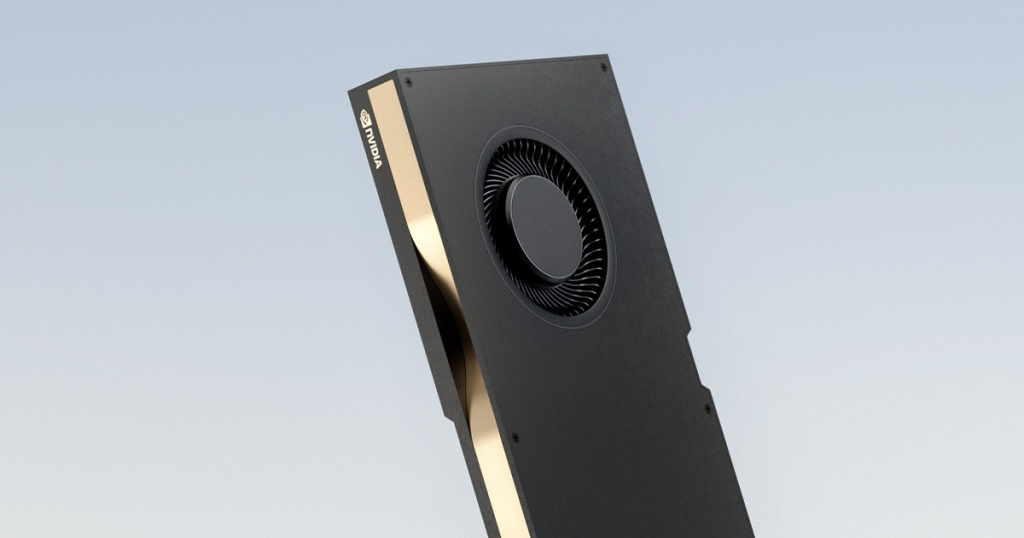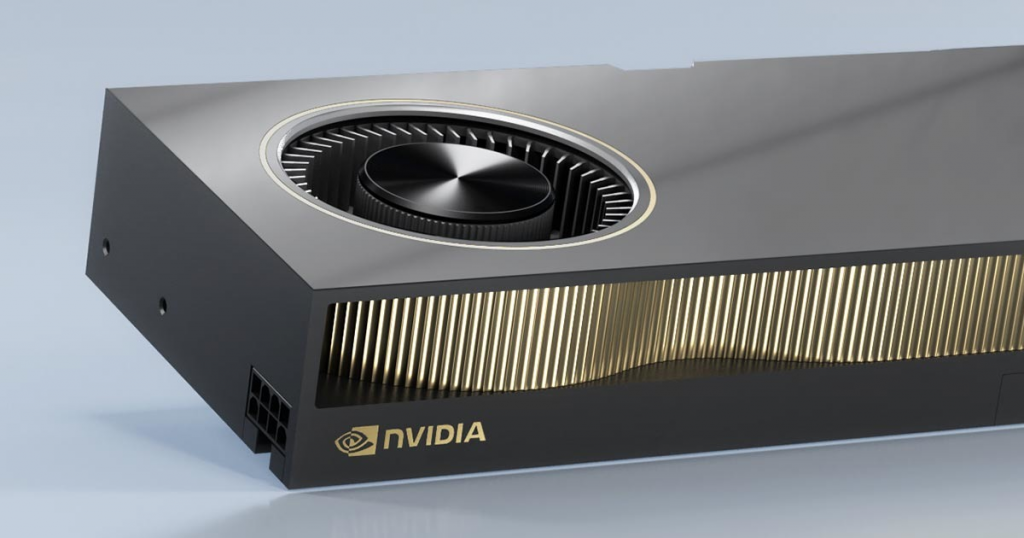In a world where data-driven decisions can shape the future, having the right GPU can be the difference between success and missed opportunities. Enter the NVIDIA RTX A4000 and RTX A6000—two titans of the GPU world that cater to the demanding needs of AI professionals and researchers. But how do these giants stack up against each other, and which one is the right fit for your cutting-edge projects?
In this detailed comparison, we’ll unravel the specifications, performance, and unique features of these GPUs to help you navigate the exciting landscape of AI and machine learning.
Architectural Marvels: NVIDIA’s Ampere Revolution
The RTX A4000 and RTX A6000 both harness the power of NVIDIA’s Ampere architecture, a significant leap from its predecessor, Turing. This architecture brings with it third-generation Tensor Cores and second-generation Ray Tracing (RT) Cores, designed to enhance both AI performance and rendering capabilities. Ampere’s improvements are evident in its ability to handle a broader range of professional workloads with greater efficiency.
RTX A4000: Power Meets Efficiency in a Compact Design

The RTX A4000 is tailored for professionals who need a powerful yet compact GPU. Its single-slot design makes it ideal for workstations where space is at a premium.
Key Specifications:
- Architecture: Ampere
- CUDA Cores: 6,144
- Memory: 16 GB GDDR6 with ECC
- Memory Bandwidth: 448 GB/s
- Power Consumption (TDP): 140 Watts
- Form Factor: Single-slot
Advantages:
- Compact, single-slot form factor
- Efficient power usage
- Cost-effective for medium-scale AI tasks
Disadvantages:
- Limited to 16 GB of memory
- No support for NVLink
RTX A6000: The Pinnacle of GPU Performance

The RTX A6000 stands as NVIDIA’s flagship GPU, engineered for the most demanding applications. Its dual-slot form factor houses an impressive array of cores and memory, designed to tackle the largest AI models and the most complex simulations.
Key Specifications:
- Architecture: Ampere
- CUDA Cores: 10,752
- Memory: 48 GB GDDR6 with ECC
- Memory Bandwidth: 768 GB/s
- Power Consumption (TDP): 300 Watts
- Form Factor: Dual-slot
Advantages:
- Superior performance in AI and ML workloads
- Expansive memory capacity (48 GB)
- NVLink support for multi-GPU setups
Disadvantages:
- Higher cost
- Larger, dual-slot form factor
Performance Breakdown: A Comparative Look
| Feature | RTX A4000 | RTX A6000 |
|---|---|---|
| CUDA Cores | 6,144 | 10,752 |
| Tensor Cores | 192 | 336 |
| RT Cores | 48 | 84 |
| Memory | 16 GB GDDR6 | 48 GB GDDR6 |
| Memory Bandwidth | 448 GB/s | 768 GB/s |
| Power Consumption | 140 Watts | 300 Watts |
| Form Factor | Single-slot | Dual-slot |
| Max Digital Resolution | 7680 x 4320 at 60Hz | 7680 x 4320 at 60Hz |
Impact of Core Specifications on Performance
The primary distinction between the RTX A4000 and RTX A6000 is their core count. The A6000’s higher number of CUDA, Tensor, and RT Cores translates to enhanced capabilities in processing large datasets and executing complex models. In contrast, the A4000 offers substantial power for less intensive tasks, striking a balance between performance and cost.
Memory Specifications: Capacity and Bandwidth
Memory Capacity:
- RTX A4000: 16 GB
- RTX A6000: 48 GB
The A6000’s larger memory capacity enables it to handle more extensive datasets and complex simulations, while the A4000 is well-suited for typical workloads.
Memory Bandwidth:
- RTX A4000: 448 GB/s
- RTX A6000: 768 GB/s
Higher memory bandwidth in the A6000 allows for faster data processing, which is crucial for large-scale neural network training.
Power Efficiency and Cooling
Power Consumption:
- RTX A4000: 140 Watts
- RTX A6000: 300 Watts
While the A4000 is more energy-efficient, the A6000’s higher power draw reflects its superior performance capabilities.
Cooling Solutions: Both GPUs feature advanced cooling to manage heat during intensive tasks. The A4000’s single-slot design ensures efficient cooling in compact setups, while the A6000’s dual-slot form factor provides enhanced thermal management for sustained performance.
Practical Applications and Use Cases
RTX A4000:
- Ideal For: Medium-scale AI model training, data analysis, 3D rendering.
- Best Suited For: Professionals needing a cost-effective, high-performance GPU for standard tasks.
RTX A6000:
- Ideal For: Large-scale neural network training, complex simulations, high-resolution rendering.
- Best Suited For: Organizations and researchers requiring top-tier performance for demanding applications.
Scalability and Future-Proofing
Multi-GPU Scalability:
- RTX A6000: Supports NVLink for multi-GPU setups.
- RTX A4000: No NVLink support, suitable for single GPU configurations.
Future-Proofing: The A6000’s superior specifications and memory capacity make it a future-proof choice for high-end applications. The A4000 remains a solid option for more budget-conscious users with evolving needs.
Investment Considerations and Value for Money
Price and Value:
- RTX A4000: Offers a balanced price-to-performance ratio.
- RTX A6000: Higher cost justified by exceptional performance and scalability.
Support and Availability: Both GPUs are widely available through NVIDIA’s network, with comprehensive support and warranty coverage.
Conclusion:
Choosing between the RTX A4000 and RTX A6000 involves assessing your specific requirements, budget, and performance needs. The A4000 provides an excellent balance of performance and cost, ideal for many professionals. In contrast, the A6000 offers unparalleled power for the most demanding AI and ML tasks, making it a valuable investment for cutting-edge research and large-scale projects. As technology evolves, both GPUs remain strong contenders in their respective categories, ensuring that your choice will support your work effectively in the dynamic world of AI.

Leave a Reply
You must be logged in to post a comment.